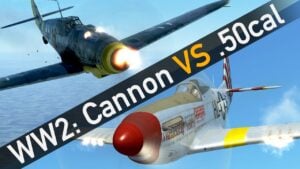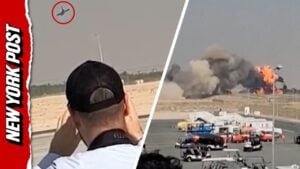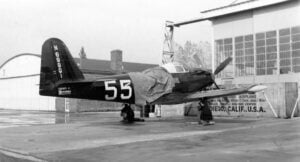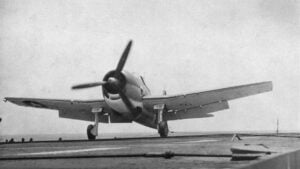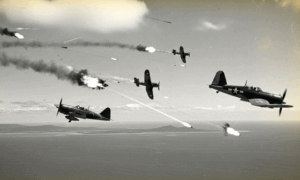9 Close Air Support Aircraft During the Second World War
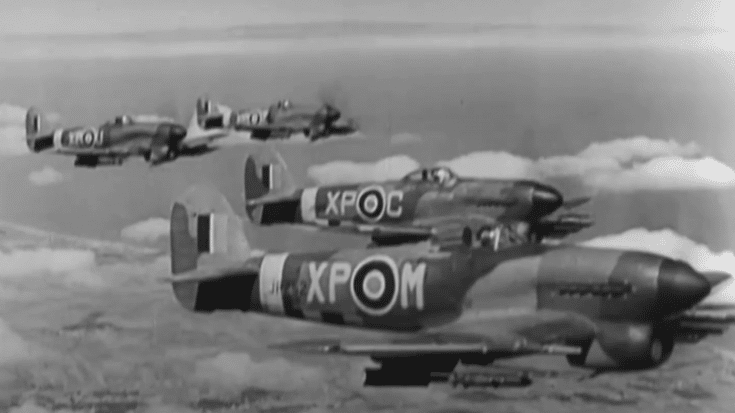
hw97karbine / YouTube
The Second World War was a period of rapid advancement in military technology, with air power playing a pivotal role in the conflict. A variety of aircraft were deployed for close air support (CAS) missions, crucial for ground operations. CAS aircraft were tasked with providing direct support to ground troops, engaging targets up close with precision. Here, we explore nine key aircraft that were instrumental in these roles throughout the conflict.
F.E 2d
The F.E 2d, flying much earlier than World War II, was a pioneer in the close air support role during World War I. Its mention underscores the long history of CAS in warfare. The aircraft was among the first to be used for direct support on the battlefield, marking a significant evolution in military aviation. Equipped for both reconnaissance and bombing, the F.E 2d demonstrated the effectiveness of aircraft in supporting ground troops, laying groundwork for future CAS tactics and strategies.
Armstrong Whitworth Whitley (RAF)
The Armstrong Whitworth Whitley served as a mainstay for the Royal Air Force (RAF) during the early years of the Second World War. While initially designed as a medium bomber, the Whitley was adapted for a variety of roles, including maritime reconnaissance and dropping paratroopers. Its versatility allowed it to carry out close air support tasks, providing crucial assistance to ground operations across different theaters of war. The Whitley’s reliability and performance underlined the importance of multi-role aircraft in wartime strategy.
Avro Anson (RAF, FAA)
The Avro Anson was another versatile aircraft that proved invaluable during the Second World War. Initially intended as a light reconnaissance bomber, the Anson was utilized by both the RAF and the Fleet Air Arm (FAA). Its adaptability saw it serving in roles ranging from gunnery training to air-sea rescue missions. Despite its limitations in speed and armament, the Anson’s contribution to training and coastal operations helped maintain Allied superiority in various domains.
Boeing Fortress (RAF)
The Boeing Fortress, more commonly known as the B-17 Flying Fortress, was an American heavy bomber that saw extensive service with the RAF. Renowned for its durability, defensive armament, and long range, the B-17 was capable of penetrating deep into enemy territory. While primarily used for strategic bombing, its payload capacity and precision bombing capabilities enabled it to perform close air support functions, disrupting enemy supply lines and fortifications.
Blackburn Botha (RAF)
The Blackburn Botha was a British reconnaissance and torpedo bomber that served during the early part of the Second World War. Despite facing criticism for its performance shortfalls, the Botha undertook anti-submarine patrols and training exercises. Its role in maritime operations underscored the significance of CAS aircraft in controlling sea lanes and supporting naval engagements, even if indirectly.
Bristol Beaufort (RAF, FAA)
The Bristol Beaufort was a torpedo bomber flown by the RAF and FAA, notable for its role in anti-shipping operations and mine-laying activities. The Beaufort’s design emphasized speed and range, allowing it to strike at enemy naval vessels and support Allied naval forces. Its successful deployment in various theaters demonstrated the adaptability of CAS aircraft to specialized warfare requirements.
Consolidated Catalina (RAF)
The Consolidated Catalina was an American-built flying boat that excelled in long-range reconnaissance and anti-submarine warfare for the RAF. Its ability to land on water and perform marathon patrols made it indispensable for maritime patrol operations. The Catalina also participated in rescue missions and occasional bombing roles, highlighting the diverse applications of CAS aircraft beyond traditional battlefield support.
Consolidated Liberator (RAF)
The Consolidated Liberator, or B-24, was another heavy bomber used by the RAF, distinguished by its range and payload capacity. Like the B-17, the Liberator carried out strategic bombing missions but was also adaptable to various roles, including anti-submarine warfare and transporting supplies. Its contribution to maintaining Allied air superiority and disrupting enemy operations was a critical factor in the war’s outcome.
Hawker Typhoon (RAF)
The Hawker Typhoon epitomizes the evolution of close air support aircraft during the Second World War, serving as a bridge between the fighter planes of the early war and the more specialized ground-attack aircraft that would follow. As a British single-seat fighter-bomber, the Typhoon was unparalleled in its role as a low-altitude close-support aircraft, making a significant impact on the ground battle, especially during the Battle of Normandy. Its powerful Napier Sabre engine allowed it to deliver a formidable payload with speed and precision, while its robust armament made it a deadly opponent to both enemy armor and fortifications.






















